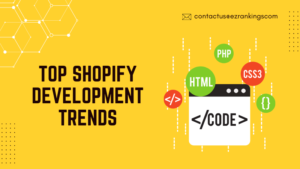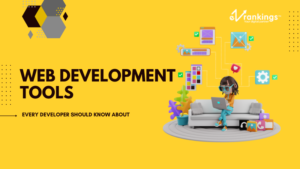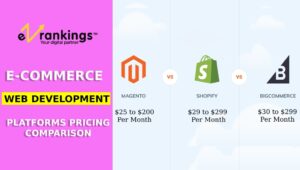How Much Should I Pay for Website Development?

Do you know that website design impacts 94% of first impressions and 75% of web credibility? And from that percentage of users, almost 89% of online shoppers switch to a competitor site after having a poor user experience (UX). Shocking right? But it is true. However, this proves how important an incredible website is for your brand or business.
But if you wonder how much it costs to build a website, you are not alone in the loop. Whether you are a growing business or a startup, understanding how much you must spend to develop a perfect is crucial before diving in. But, the pricing generally varies based on features, goals, and provider type. So, let’s dive deep and figure out.
Types of Websites and Their Price Ranges
According to the 2025 data, there are 1.2 billion websites present globally. But, all these websites cost small to high range. But, not a single development method works for all sites. A website that works perfectly for an educational institution will not work for an e-commerce business. So, there are different types of websites, and based on the size and complexity of the website, the price range usually varies. Below, we mention a detailed breakdown of the websites so you can know which type suits your business the most.
1 – Basic Informational Website
Basic information websites are simple, cost-effective, and perfect for small businesses. As it uses some pre-made design templates for a clean, functional appearance, this site provides essential business or personal details without advanced features.
Furthermore, typically consists of 5 to 10 pages, such as – the homepage, about us, services, and contact; these are cheaper to develop and maintain without regular updates. The approximate cost varies for these websites, from $300 to $1,500.
2 – Template-based Website
A template-based website is another simple-formed website that uses some excellent pre-designed themes that assist in quicker setup and overall cost efficiency. Suitable for personal blogs, portfolios, or small businesses, these websites help to create a great online presence without extensive customization.
Though limited in flexibility, these websites are a preferred choice for many because of their polished and professional look. Also, these websites’ faster development cycles and reduced costs are ideal for budget-conscious users. Here, the approximate cost ranges from $500 to $2,000.
3 – Small Business Website
This small business website often brings the best results by expanding or evolving the first category websites. There are many times when a basic website goes through a redesign or extension. In such cases, the website developer adds some pages to the existing website.
This is done to include the new services and add more pages, but that is not more than 20. The ease of development using the custom design with responsive layouts also keeps the approximate cost between $1,500 and $5,000.
4 – E-commerce Website
An e-commerce website includes a vast range of product catalogues with many categories. These often include a shopping cart and secure payment gateway integration. This type of website also supports different features, such as shipping, taxes, customer management, and order tracking.
Built on popular and feature-rich platforms such as Shopify, WooCommerce, or Magento, this type of website is perfect for businesses looking to sell different products online. Also, being scalable and feature-rich, it enables full retail operations online. The approximate cost ranges of developing such a site varies between $3,000 to $20,000+.
5 – Custom Web Applications / Portals
Custom Web Applications or Portals are tailored to meet business needs with advanced functionality such as user dashboards, admin panels, API integrations, and proper database connectivity.
Additionally, this type of website is perfect for startups, SaaS providers, and enterprises requiring robust and scalable digital solutions. These platforms also offer unique workflows and great user experiences with an approximate spend range of $10,000 to $100,000+.
Important Factors That Impact Website Development Cost
Every minute, almost 175 new websites are created. The reason behind this is these days, modern businesses understand the need for well-crafted websites. These are the backbone of any website that successfully helps develop the online presence. Also, you can consider it a virtual storefront that greets many potential customers while keeping them highly engaged. However, many important factors impact website development costs. So, let’s explore what influences it –
1 – Website Complexity
A website’s complexity is usually determined by the number of pages the site has. Similarly, the features, functionalities, and required integrations matter here. While a simple brochure website may have 5–10 pages, complex sites like e-commerce sites are broad with more user portals. Similarly, the cost increases based on the features and dynamic content involved. So, understanding your site’s purpose and features is vital to determining the right scope and budget for the project.
2 – Design Requirements
Design requirements usually play a critical role in proper website appeal and usability. The charges vary when choosing between a ready-made template or a custom design. One helps in faster deployment, while the other specifically meets your brand’s needs. Custom designs are all about UI/UX enhancements, proper user flow optimization, and meeting the branding alignment. On the other hand, while many pre-existing templates are budget-friendly, custom designs offer unique layouts that ensure better user engagement. Here, the design requirements impact the project’s costs significantly.
3 – Development Platform
The right development platform depends on your ultimate business needs. Developers use different development platforms available globally. While WordPress is used for blogs and informational sites, Shopify is used for e-commerce. Similarly, Magento is ideal for different complex online stores. All these platform selection impacts the overall cost of website development greatly. The platform businesses choose should meet their long-term goals and expected user interaction.
4 – Content Creation
A well-developed website can not perform well without strong content. While developing a website, content writing, image sourcing, and product uploads should be considered. Also, some high-quality, original content has the potential to boost stronger engagement. Hiring professionals for these tasks is necessary if you don’t have existing materials to implement on the website. Overall, it impacts the cost as you must integrate all these things to attract and convert visitors.
5 – SEO and Mobile Optimization
It is necessary to ensure your business website is fully optimized for search engines and mobile devices. While basic SEO includes metadata, sitemaps, and keyword integration, advanced SEO is about implementing structured data, speed optimization, and ongoing analysis. Mobile responsiveness is also a matter of fact as these days users want a seamless website in both desktop and mobile versions. Thus, it improves the user experience and Google rankings. All these factors together impact the cost of developing a site.
6 – Third-Party Integrations
Integrating the website with some third-party tools can enhance your website’s functionality, and it can streamline different business operations. Some common integrations include – CRM systems such as HubSpot, email marketing tools such as Mailchimp, analytics platforms like Google Analytics, and payment gateways like PayPal. All these tools are essential to enable automation, help in proper tracking, and secure better transactions. These necessary integrations affect the cost of website development and ensure seamless functionality with a better user experience post-launch.
7 – Maintenance and Support
Ongoing maintenance and support for any website is crucial to keep the website secure, updated, and error-free. However, many website development agencies charge for maintenance and support services, while others ask for a one-time payment, which includes development and maintenance charges. A normal informational site requires minimal support, but an e-commerce website often requires proper and regular maintenance. So, these things have an impact on budgeting and cost.
Freelancer vs. In-House Team vs. Web Development Agency: Cost Comparison
The costs of developing a website vary significantly when it is developed by freelancers, in-house teams, and even leading web development agencies. Freelancers often charge between $500 and $3,000 for website development. On the other hand, there is no need to pay any additional charges because they are salaried persons of companies. Similarly, agencies typically charge between $2,000 to $20,000 or more.
Furthermore, quality, support, speed, scalability, everything differs when people developing the website change. Whereas in-house teams depend on their expertise and resources, agencies offer structured processes and experienced professionals. On the other hand, support and scalability are limited with freelancers, moderate with in-house teams, and robust with agencies. So, considering these facts, it can be stated that freelancers suit small projects, and in-house teams fit ongoing needs. But, the agencies are the ideal and most reliable fit for any website development.
| Feature | Freelancer | In-House Team | Web Development Agency |
| Cost | Lower ($500–$3,000) | Highest (Salaries, tools, overhead) | Higher ($2,000–$20,000+) |
| Quality | Varies by skill | Depends on team expertise and resources | Structured process, experienced team |
| Support | Limited availability | Full-time support, internal coordination | Dedicated team with ongoing support |
| Scalability | Limited | May require hiring or training | Scalable based on project size |
| Speed | Can be slow or inconsistent | Varies; depends on workload and priorities | Typically faster with deadlines |
| Best For | Small, low-budget projects | Larger companies with ongoing web needs | Businesses seeking reliable results |
Additional Web Development Costs to Consider
It is a fact that there are several ongoing website expenses that businesses or individuals often forget to consider with the initial cost of web development. So, here’s a breakdown of some common additional website development costs that individuals or businesses should count on –
- Domain and hosting fees
A domain name is the address of your website on the internet. Domain names come with hosting fees, and the payments have to be made annually or for multiple years at a single time. Buying costs often vary on the domain name registration, domain extension (.com, .org, etc.), and the popularity of the specific name you choose. However, the price might vary from $10 to $100 annually.
- SSL certificate
The SSL certificate can secure your website by encrypting the sensitive data transfers. Additionally, when building trust among visitors and improving search rankings, many hosting plans offer SSL for free. However, premium SSLs might cost $50–$200 annually. Also, it is a crucial investment for e-commerce and data-sensitive websites. Thus, it protects user information and enables the proper HTTPS protocol.
- Monthly maintenance
Building a website, whether a blog or e-commerce, requires ongoing maintenance to ensure smooth website operation, proper security, and optimal performance. This might include different tasks such as updating plugins, fixing bugs, backing up data, and maintaining website security.
Furthermore, you can avoid the maintenance cost if you have technical skills. Alternatively, you must pay a monthly or hourly fee for in-house or outsourcing.
- Software/plugin licences
Many websites use premium plugins or third-party software for additional functionalities and security. These include SEO tools, e-commerce features, or some advanced analytics. These plugins also come with annual or monthly licence fees, ranging from $20 to $300 or more.
- Security and backups
Strong website security always prevents the chances of hacking, data breaches, and serious malware infections. Investing in firewalls and malware scanning tools and opting for automated backups are essential. Backup solutions also help recover data in case of crashes or cyberattacks. These services often cost $5–$50 monthly.
How Can You Budget Wisely for Website Development?
Website development is a long-term investment that allows you to create a strong online presence. Users value those businesses with a website more, and it is a fact. So, budgeting wisely for website development is necessary because only in this way can you achieve your goal.
- Define your goals and must-have features
At first, you need to define your goals and must-have features that you want to integrate into your website. For example – whether you need a blog website, a business website, or an e-commerce website, the resources, must-have features, and goals differ. Once you confirm these things, you can ask the agency to develop the right website that aligns perfectly with your objective. Also, you can prioritize essential elements, stay within budget, and communicate effectively with developers.
- Get quotes from multiple providers
Website development requires a proper budget. On the other hand, if you want to budget wisely, it is crucial to gather different quotes from different developers, freelancers, or website development agencies. Compare the correct pricing, portfolios, services included and even the proper delivery timelines. Thus, you can avoid overpriced services and identify the best value for your budget. When you get multiple quotes, you can have the chance to negotiate effectively and select the right partner who balances the ideal quality with cost efficiency.
- Ask for a detailed scope of work
When you connect to a website development agency, it is your right to ask them about the outlines of all deliverables, timelines, and cost breakdowns. Request this from your website developer so you can avoid unexpected expenses. A detailed scope of work gives you a clear idea of web pages, features, design standards, integrations, and revision limits. This document helps you to set clear expectations, reduces the scope of misunderstandings, and helps manage your budget efficiently.
- Plan for future upgrades
There are many times when you plan an initial website only with some basic features. There could be many reasons behind that – budget and necessity. However, keeping a plan for upgrades such as additional pages, feature-rich SEO tools, or advanced functionalities saves time and money. Choose a flexible and popular platform that allows easy enhancements. Additionally, discussing the ongoing support and maintenance costs with your developer will help you budget. Thus, you can ensure you can grow your website with your business and remain competitive.
Conclusion
By now, you have a clear overview of different factors that determine the overall cost of a website development. With the information mentioned above, we have tried to cover all the necessary stages that are a part of website development and come with relevant costs.
Remember that a website is the base of any business. So, whether you are a start-up or an existing business owner, focus on the long-term goal, invest wisely in developing a website, and build your brand identity digitally. The website can make or break your online impression, so partner with a reliable web development company and reach your goals with confidence.






